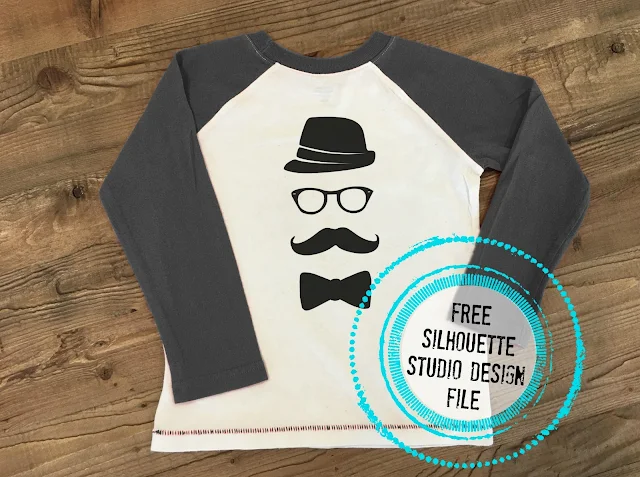The Silhouette CAMEO and Portrait and the software required to use it, Silhouette Studio, are both very powerful and there is a learning curve. You can shorten it though if you take just a little time to master - or at least understand - the most important fundamentals before you even make your first cut.
Of course the very first step is getting it out of the box...then you can get started! This free Silhouette tutorial will walk you through setting up a Silhouette CAMEO 3 or your Silhouette CAMEO 4 set up ..or your CAMEO 5 setup for the first time. You'll also want to make sure you've downloaded and installed the Silhouette Studio software (which you can actually do even before you get the machine.) This Silhouette tutorial will walk you through Silhouette Studio set up for beginners.
Once you've set up the machine and software successfully, you're probably ready to just jump right in. BUT let's take another (brief) pause. I want you to be successful on your first cut rather than want to throw the machine out the window because the vinyl ripped, the blade didn't cut anything, or your design has no cut lines.
To be successful on your first cut there are 10 things, I firmly believe you should master before you even begin cutting. I'm going to give you five right now and if you're feeling more confident, instead of more overwhelmed when you get through this list, I'll share the remaining five with you as well. Deal?!
- Understanding the difference between a Silhouette Studio software Update and an Upgrade
- How to import and open a design into Silhouette Studio
- How to install your blade correctly
- How to pick the correct vinyl
- Recognizing a beginner level project
1. Silhouette Studio Update vs Upgrade
Silhouette Studio Updates and Upgrades are two different things and it's important to understand the difference and how to check which version of both you're using.
Silhouette Studio updates are free for all users and should always be downloaded from the Silhouette America website. Updates typically improve the software by fixing bugs or, in some cases offering new tools and functionality.
Silhouette Studio upgrades require a one-time paid fee. There are three upgrade levels: Designer Edition, Designer Edition Plus, and Business Edition. The upgrades are delivered as a 16 digit license key and can be purchased from a number of retailers. The least expensive place to buy Silhouette Studio software upgrades is usually Swing Design.
Each level of upgrades unlocks additional features with the higher level upgrades not only unlocking their features, but also the features of the lower upgrades.
Each level of upgrades unlocks additional features with the higher level upgrades not only unlocking their features, but also the features of the lower upgrades.
2. Importing and Opening Designs in Silhouette Studio
There are at least 8 different ways to open designs and cut files in Silhouette Studio. The one you pick depends on where the original file is from, which upgrade level of Silhouette Studio you are using, the number of files you're importing and whether you want to save or open your files at the time of import.
3. Installing the Silhouette Blade Correctly
Knowing how to properly install the Silhouette blade - specifically the Autoblade - into the blade carriage is crucial. The number one reason Silhouette CAMEO 3 beginners have trouble with their first Silhouette cuts is due to the blade being installed incorrectly.
If there's any bit of a gap between the blade and the carriage holder the blade can not adjust correctly while tapping and therefore will either not cut at all or cut too deep.
For this reason it's essential the blade is installed correctly.
4. Picking the Right Vinyl for your Silhouette Project
Between the numbers, the finishes, and the adhesive types it can be super confusing and overwhelming to figure out the best type of vinyl for your Silhouette CAMEO projects.
There are two main types of vinyl: adhesive and heat transfer.
There are two main types of vinyl: adhesive and heat transfer.
Adhesive vinyl (sometimes called "sticky vinyl" or "sticker" vinyl) comes on waxy-like liner and goes on hard surfaces like mugs, cars, windows, and cups. It is not used for clothing or fabrics.
There are several types of adhesive vinyl - differentiated by their adhesive strength and finish. You may have heard of Oracal or 651 or removable vinyl. These are all referring to different things.
Oracal is the manufacture of the most widely used adhesive vinyl in the craft industry.
The most common types of Oracal vinyl in the craft industry are: Oracal 651 and Oracal 631.
Oracal 651 is a permanent adhesive vinyl with a glossy finish. It's best used for pretty much anything except walls or on applications where you plan to remove the vinyl after just a short period of time.
Oracal 631 is removable adhesive vinyl. It has a matte finish and is ideal for vinyl wall decals and temporary applications due to it's lower adhesive strength.
Heat transfer vinyl (HTV) is a heat and pressure activated vinyl that is ideal for textiles and can also be used on wood and canvas. Heat Transfer Vinyl is not sticky to the touch. It must be cut in reverse from the back side due to the carrier sheet which covers the front of the material. After the HTV is applied with heat and pressure the carrier sheet is peeled away.
Siser Easyweed is the most popular and widely used Heat Transfer Vinyl in the craft industry.
5. Identifying Silhouette Beginner Projects
One sure-fire way to get off to a rocky start with your Silhouette machine is to pick a project that's too advanced for your first cut. When it comes to picking the perfect Silhouette beginner project, I think heat transfer vinyl is the best material to start with.
HTV is more forgiving than almost any other material in almost every way which makes HTV ideal for beginner Silhouette projects. Click here for a step by step beginners Silhouette HTV tutorial.
Your first Silhouette CAMEO project should also only contain one color material and be a rather solid design that's at least 3x3".
A single color design means you are only focused on cutting and applying one design rather than layering multiple colors. Cutting a design that's relatively solid - rather than overly intricate - allows you to focus on the basics of cutting rather than concerning yourself with fine turning cut settings for intricate cuts.
I am providing you with a free Silhouette cut file that I suggest you use for your first Silhouette project. This Little Hipster design is available as a free download and it's what I would highly recommend you use to create your first Silhouette project.
I think having a solid understanding of these five skills will get you off to a great start with your Silhouette machine. And you should be in good shape now to make your first Silhouette cut.
Since I don't want to overwhelm you - or have you blame me for holding you back in cutting - I limited my list to five. However...I actually think there are a total of 10 fundamentals that every Silhouette beginner should know before making their first cut.
If you'd like to pretty much guarantee you'll have a perfect first cut, lesson the learning curve even more, and avoid wasting materials - how about I send the rest of the list right to your inbox! Just sign up to get Silhouette School 's email list so you get our blog posts to your email inbox and as a welcome we'll send you 5 MORE Silhouette fundamentals to master now!
- How to check which version of Silhouette Studio Software you are using
- Understanding the difference between the Silhouette Cloud and the Local User Library
- How to Back Up or Export Your Silhouette Studio Library
- How to load your cutting mat
- Knowing where to find free Silhouette help
Note: This post may contain affiliate links. By clicking on them and purchasing products through my links, I receive a small commission. That's what helps fund Silhouette School so I can keep buying new Silhouette-related products to show you how to get the most out of your machine!
Get Silhouette School lessons delivered to your email inbox! Select Once Daily or Weekly.















.png)




thank you i just learned the reason why I could not cut my vinyl.
ReplyDeleteI tried, but it doesn't cut :(
ReplyDeleteHello there! Unfortunately this forum doesn't let us do a whole lot of troubleshooting. I would highly recommend checking out our site Silhouette U that gives us a chance to offer 1:1 help, in depth videos and more!
DeleteThank you for this series of posts. I got a cameo 3 hand me down and am an artist and jewelry crafter. This has helped me so far with getting things set up. Thanks!
ReplyDelete